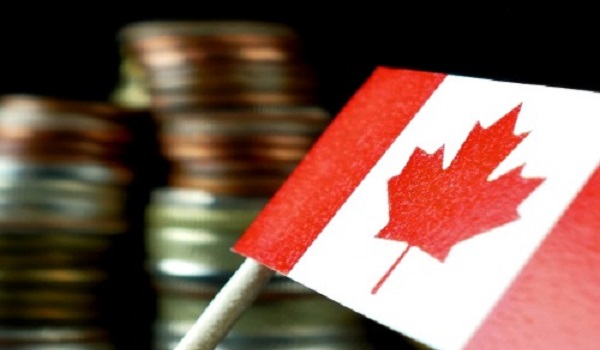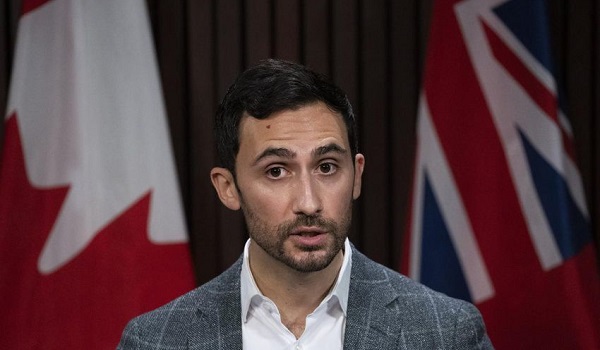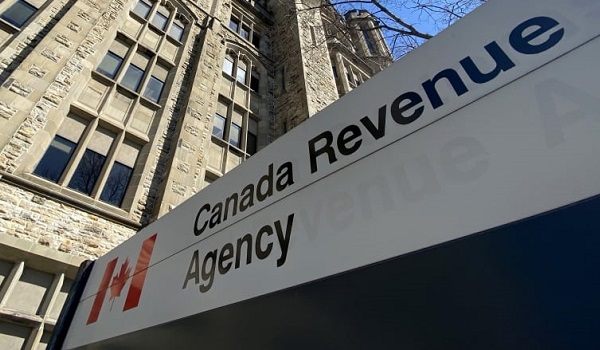Canadians feeling the pinch of interest rates. Is there hope of rate relief?
Consumers continue to tighten their belts and spend less amid higher interest rates, the Bank of Canada reported Monday, which some economists say could lead to interest rate cuts as early as the first half of this year.
The central bank’s fourth-quarter consumer and business outlook survey shows roughly two-thirds of consumers said they were reducing spending or planning to do so due to interest rates and inflation.
The survey found the negative effects of rising interest rates are spreading, with firms reporting that “softer demand and renewed competitive pressures are slowly pushing down growth in output prices” and companies’ “pricing behaviour is slowly returning to normal.”
“However, some businesses continue to make larger and more frequent price increases than they did before the COVID‑19 pandemic,” the report added. Some firms also reported a decline in sales volumes and “indicators of future sales, such as order books and sales inquiries, have deteriorated compared to a year ago.”
A total of 39 per cent of businesses said sales volumes fell over the past year due to higher interest rates and inflation.
In December the bank announced it would hold its overnight lending rate at five per cent, and said the slowing economy is a sign its battle against inflation is working. The bank’s key rate is at its highest in 22 years after 10 increases since March 2022 in its fight against inflation.
Economists and observers expect the bank to start cutting rates in the first half of 2024.
‘Probably start to see easing by the summer’
“I think that we’ll probably start to see easing by the summer in terms of interest rates,” said David Macdonald, a senior economist with the Canadian Centre for Policy Alternatives
“The bank is concerned about several things in terms of strong economic growth, which we haven’t seen for a year,” Macdonald added. “There’s expectation that this will continue to be low or potentially negative next year, which is what the bank wants to see.”
Last month, CIBC chief economist Avery Shenfeld said the bank is forecasting a fall in interest rates by June, with the overnight rate hitting 3.5 per cent by the end of the year.
At the same time consumers can expect to see fewer price hikes in stores.
“Manufacturers and companies realize now that the party is over in terms of price increases, sales volumes and making abnormal profits,” said retail analyst Bruce Winder. “Consumers have hit a wall and they aren’t going to spend as much. They have household debts that are high and interest rates are high.”
Value is at the forefront of consumers’ minds
Companies are going to have to change their strategy because value is at the forefront of consumers’ minds right now, Winder said.
“Companies are going to have to think more about value and competition and in some cases, lowering their prices or at least raising prices less,” he said. “The consumer just won’t bite … They’re not going to buy anything unless it’s on sale and they’re going to buy less of things too — it’s going to shift consumption drastically.”
In October, the country’s annual rate of inflation dropped to 3.1 per cent, down from 3.8 per cent in September, according to Statistics Canada. While that’s well below the 8.1 per cent inflation peak in June 2022, it’s still above the bank’s two per cent target.
“While many Canadians are experiencing rising levels of financial stress,” the bank said in its report “this stress is higher among those who typically live paycheque to paycheque.”
‘Wage growth is expected to be higher’
The central bank said financially vulnerable households typically hold less than two weeks’ worth of expenses in liquid assets, frequently run out of money before the end of the month and are not able to immediately pay for an unexpected expense of $500. The survey found one-in-four consumers reported having at least one of these characteristics.
The bank’s next announcement will take place on Jan. 24, and it is expected to keep its key policy rate on hold.
At the same time, businesses still expect inflation to remain high due to wage growth and the prices of commodities, food and housing.
“Wage growth on average is expected to be higher than normal over the next 12 months, often related to cost-of-living adjustments,” the survey said. However, wage growth expectations “are gradually declining … as fewer businesses adjust wages for past cost-of-living increases and as demand for labour eases.”
“The majority of firms think wage growth will be back to normal by 2025,” the survey said.
With files from the Canadian Press.
This article was reported by The Star















